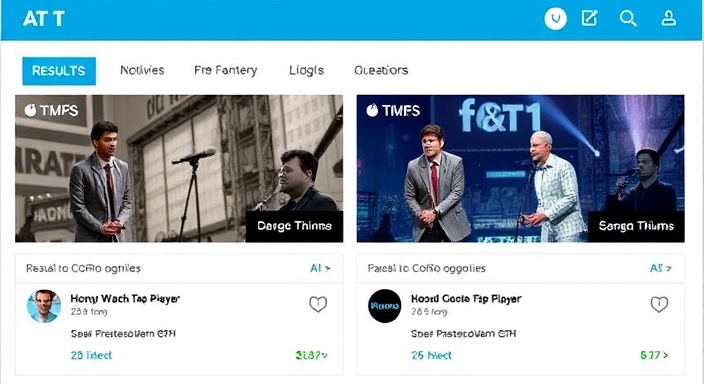
127.0.0.1:62893: A Guide on Localhost and Dynamic Ports
Understanding how IP addresses and ports function is essential, especially when dealing with local development environments. One such combination that often pops up is 127.0.0.1:62893. This string represents a combination of an IP address (127.0.0.1) and a port number (62893), both of which are crucial for local networking and web development. In this article, we’ll break down what 127.0.0.1:62893 is, how it works, and how you can use it effectively in your projects.
What is 127.0.0.1?
The Localhost Address
The IP address 127.0.0.1 is commonly referred to as localhost or the loopback address. When you use this address in any network request, the data doesn’t leave your machine; instead, it loops back to the device itself. This allows your computer or server to communicate with itself for testing and configuration purposes without involving any external network.
This address is particularly useful for developers because it enables them to test websites, applications, or services that are being developed on the same machine without requiring access to the internet or a physical server. In essence, 127.0.0.1 is the standard address used for testing network services locally.
Why is Localhost Important?
Localhost is critical in environments where developers need to simulate the behavior of applications and services before pushing them live to production. Whether it’s running a local web server, testing a database, or debugging an application, 127.0.0.1 acts as a safe, isolated environment for these operations.
For example, developers can configure web servers like Apache, Nginx, or Node.js to listen on 127.0.0.1, allowing them to interact with the server using their web browser, but without exposing the server to the broader internet.
What is Port 62893?
Understanding Port Numbers in Networking
A port number, like 62893 in 127.0.0.1:62893, serves as a unique identifier for services running on a particular machine. While the IP address tells the machine where the data should go, the port number tells the machine which application or service should handle that data. Every service or application running on a device uses a specific port number to distinguish itself from others.
Ports are divided into different categories:
- Well-known ports (0-1023): Reserved for standard services such as HTTP (80), HTTPS (443), and FTP (21).
- Registered ports (1024-49151): Used for applications that aren’t considered standard but still have specific registration with the IANA.
- Dynamic/Private ports (49152-65535): Often used by client applications for ephemeral (temporary) connections. These ports are dynamically assigned by the operating system, and 62893 falls into this range.
Why is Port 62893 Used?
Port numbers like 62893 are often dynamically assigned to client applications or services that require temporary communication channels. For instance, a web application running on your local development environment might use 127.0.0.1:62893 to test how it interacts with a web server or database running on the same machine. This dynamic port allows multiple instances of services to run concurrently without interfering with each other.
Port 62893 could be used by various local applications such as:
- Web development environments (Node.js, React): Local web servers often listen on dynamic ports for testing and development purposes.
- Testing services: If you are using tools like Postman or other API testing utilities, they may run services locally on dynamic ports.
- Database connections: Some database servers or services can be configured to listen on specific, non-standard ports like 62893.
Example of Port 62893 in Action
Imagine you are building a web application and you use Node.js to run a local server. You configure it to listen on 127.0.0.1:62893. When you open your browser and enter http://127.0.0.1:62893, the browser sends a request to that address. The server on your local machine receives the request, processes it, and sends the appropriate response back.
The Role of 127.0.0.1:62893 in Development
Using Localhost for Web Development
When you’re working on web applications, 127.0.0.1:62893 provides a great opportunity for testing code changes locally without having to deal with live servers. Here’s how it benefits developers:
- Local Testing: Instead of deploying to a live server, you can test the application on your own machine to ensure everything is working as expected.
- Debugging: Errors can be more easily traced and resolved in a local environment since there’s no network lag or additional external factors.
- Privacy: Since 127.0.0.1 only points to your computer, no other external devices can access the services unless specifically configured to do so.
Local Development Tools That Use Dynamic Ports
Several development tools and services use dynamic ports like 62893 for local operations. Common examples include:
- XAMPP/WAMP (Local server environments): These tools allow you to run Apache and MySQL locally, and they often assign dynamic ports for web servers.
- Docker containers: Docker uses dynamic ports to expose containerized services to the local machine.
- API testing tools (Postman, Insomnia): These tools may require local servers to run on specific ports, such as 62893, to test API endpoints in isolation.
Common Issues When Using Localhost and Dynamic Ports
Working with 127.0.0.1:62893 isn’t without challenges. Here are some potential issues you might face and how to address them:
| Issue | Solution |
|---|---|
| Port Conflicts | Check for any other applications running on the same port. |
| Service Not Running | Ensure that the service or application using port 62893 is started. |
| Firewall Blockage | Check your firewall settings to make sure it’s not blocking local communication. |
| Incorrect Configuration | Double-check the server or application configuration to ensure it’s listening on the correct port. |
Troubleshooting 127.0.0.1:62893
If you’re facing issues while trying to connect to 127.0.0.1:62893, here’s a simple checklist to help troubleshoot:
- Verify the Service is Running: Make sure the application using port 62893 is active. If you’re running a local web server, confirm that it is listening on the correct address and port.
- Check for Port Conflicts: If another application is already using the port, you may need to either close the conflicting app or configure your service to use a different port.
- Check Network Settings: Ensure that your firewall or antivirus software isn’t blocking internal network traffic. You might need to allow connections to 127.0.0.1.
- Restart the Application: Sometimes simply restarting the application or web server resolves port binding issues.
Conclusion
In summary, 127.0.0.1:62893 is a powerful tool for local development and testing. It allows developers to run and test applications and services on their own machine without needing an internet connection or exposing services to the outside world. By understanding how localhost works and how port numbers are used, you can create more efficient, secure, and manageable development environments.
Whether you’re running a local server, testing APIs, or debugging applications, mastering 127.0.0.1:62893 and similar configurations will help streamline your workflow and ensure smoother, more reliable testing processes.


